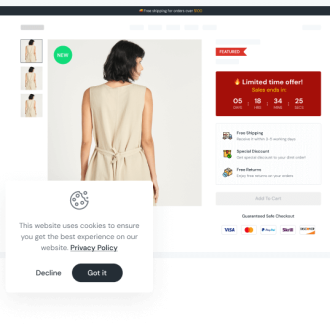In today’s technological age, the concept of “advertising” has become familiar and holds immense significance for business growth. Advertising plays an extremely important role in branding and attracting customers. Here, we, Shineapps will explore the concept of “advertising in marketing” and its role in the modern business environment.
What is advertising?
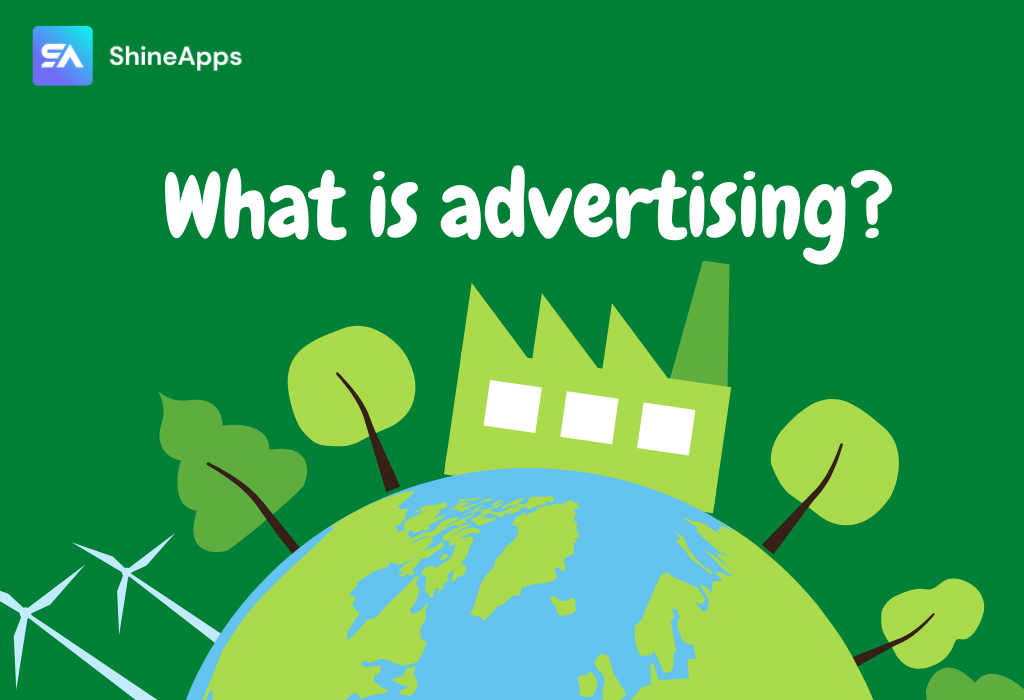
Advertising is simply the communication of information about a particular product, service, or message to a potential audience through communication channels. The goal of advertising is to create attention, impress, and drive action from customers.
The term advertising is associated with marketing activities in a business. Advertising is often distributed through media such as newspapers, television, radio, and, more recently, the Internet.
Advertising sponsors are usually businesses that want to promote their products or services. Advertising is distinguished from public relations (PR) in that advertisers pay a fee to advertise and have control over the messages.
Why is advertising important in Marketing?
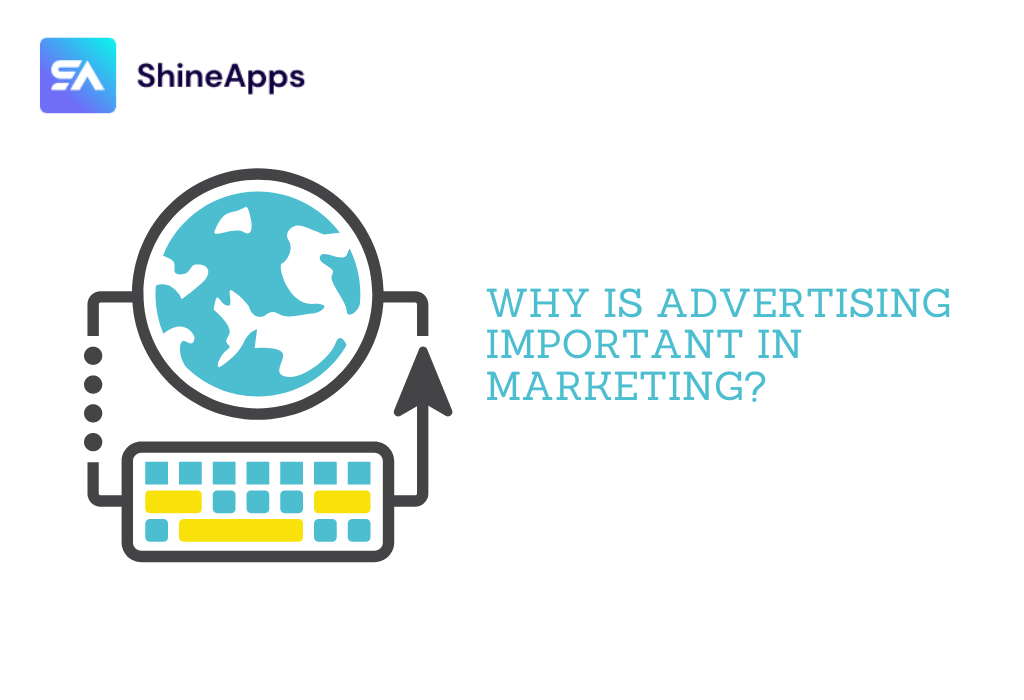
Advertising plays a pivotal role within the realm of marketing, serving as a dynamic force that drives businesses towards success. Let’s explore the vital significance of advertising within the broader landscape of marketing.
Build brand identity
Advertising is an important tool for building and honoring the brand of a business. By conveying messages related to the brand’s values, mission, and principles, advertising helps create awareness and associations in the minds of customers.
Create awareness
One of the main goals of advertising is to create awareness about your product or service among customers. Advertising helps bring information to a large number of potential customers, giving your brand the opportunity to be recognized and remembered.
Cultivate interaction
Advertising is not only one-way communication but also an opportunity to interact with customers. Online ads often come with links or call-to-action buttons, which help customers engage with the brand directly through clicks or other interactions.
Drive sales momentum
The main goal of advertising in marketing is to drive purchase action from customers. Through persuasive and engaging messages, advertising encourages customers to buy your products or use your services.
Target Precision
Advertising in marketing helps define the target audience you want to reach. By clearly defining your target audience, you can create more effective advertising campaigns that meet their needs and desires.
Create emotions and connections
Ads can evoke emotions and create connections between brands and customers. Stories, images, and messages in advertising can stimulate emotions and create a sense of intimacy.
Interact with customers
Advertising is not only a way to inform but also a way to interact with customers. Online ads often come with links or call-to-action buttons for customers to interact directly with the brand.
Elevate Competitiveness
In a competitive market, advertising provides a competitive edge. Brands that effectively convey their unique value propositions through advertising can stand out and secure a distinct place in the minds of consumers.
Types of advertising
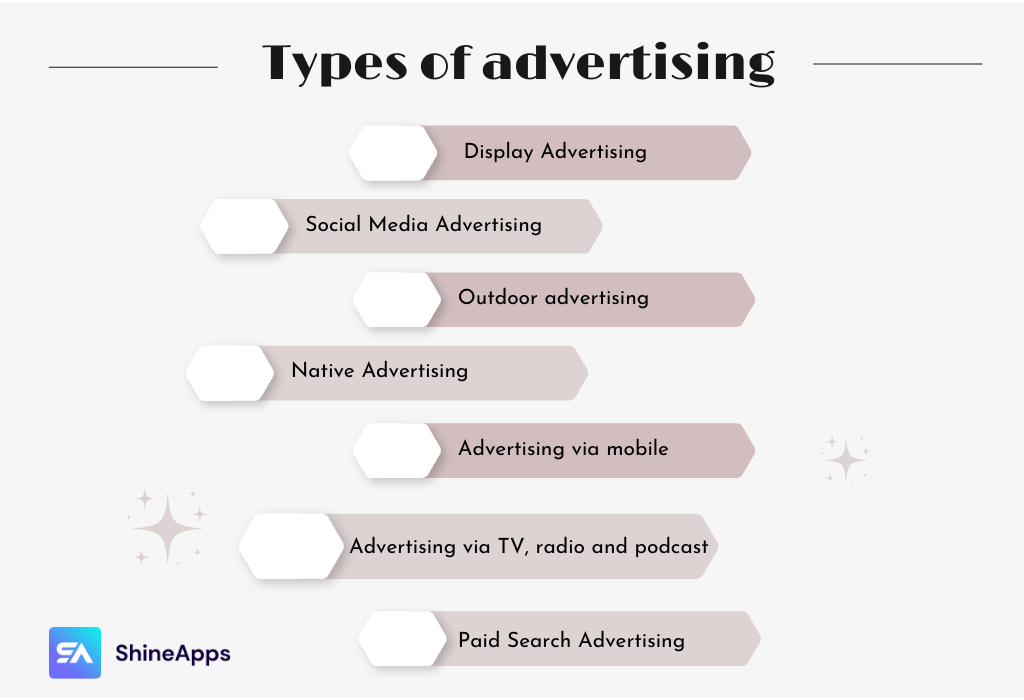
The explosion of technology has led to the development of many types of advertising to help businesses increase their competitive opportunities. Each type of advertisement possesses unique characteristics and serves specific purposes. So what types of advertising are there?
Display Advertising
Display advertising is a type of advertising that includes digital advertising and newspaper advertising. Accordingly, digital advertising is said to be an updated version of newspaper advertising, which was developed thanks to the intervention of technology.
In the form of Display Advertising, businesses will buy advertising space on the website they are interested in and then place text ads. This is akin to traditional print media advertising, such as a banner that floats on a website’s contacts or a product or service background on a website.
Social Media Advertising
Social Media Advertising has become one of the most popular types of advertising in recent years. The use of social networking sites such as Twitter, Pinterest, Instagram, Facebook, etc. helps businesses save maximum costs because the advertising price on social networks is relatively cheap.
When using this type, businesses will have to pay to get the target customers’ access to their products/services. Depending on the amount of money the business spends, the number of viewers and participation will be different.
And this type of advertising through social networks can very well become a form of word of mouth.
Outdoor advertising
Outdoor advertising, also known as OOH advertising, is the only type of traditional media advertising that helps businesses have stable revenue growth.
This type of advertising provides great brand recognition because it is displayed everywhere. So it’s easy to engrave it in the customer’s mind and make them remember it easily.
With OOH advertising, businesses will easily reach a large number of customers. Traditionally, outdoor advertising is thought to be the primary advertising tactic that supports brand awareness.
Currently, businesses use this type of business with the desire to connect the real world with the digital world. Help customers identify your business brand in all aspects.
Native Advertising
This type of advertising helps businesses reach customers more easily through online newspapers, instead of just encapsulating on social networks.
Simply put, native advertising is the business’s ad that will appear with many other articles. Usually, this ad will appear in major, reputable newspapers.
The form of native advertising can appear in the form of articles, and videos and be integrated naturally under the articles to make readers immediately want to click on the link.
This is also a type of advertising that gives consumers valuable content with whatever message the business wants to convey to its customers.
Advertising via mobile
Mobile advertising is a form of advertising information about the products/services of a business to mobile users with an internet connection. Similar to ads aimed at users using computers, mobile ads are also displayed in the form of text, banners, or videos.
However, mobile ads are smaller in size and compatible with many different-sized phone screens.
Advertising via TV, radio and podcast
TV advertising is a type of broadcast advertising, in which businesses advertise their products/services through television ads with a length of 20-60 seconds. Although it is an expensive form of advertising, it allows businesses to repeat their ads frequently.
Radio advertising is another form of broadcast advertising that broadcasts advertisements during program breaks. Customers can listen to radio ads while doing other activities, such as driving or doing housework.
With Podcast advertising, businesses can sponsor podcasts or advertise their products/services that are broadcast in episodes. Typically, podcasts play commercials at the beginning, middle, and end of episodes.
Paid Search Advertising
Paid Search advertising, also known as paid search advertising, it is a type of online advertising, sometimes called pay-per-click (PPC) advertising.
Businesses that use PPC advertising only pay when a user clicks on their ad. They bid on specific keywords, often related to their business, along with the placement of their ads on search engines.
Today, paid advertising is said to be the most popular form of advertising and the most chosen by many businesses to promote their products/services to customers.
How to make effective advertising

Making effective advertising requires a careful strategy and a combination of creativity and data analysis. Here’s a step-by-step guide on how to create effective advertising:
- Determine Goals: First, determine the objective of the advertising campaign. You need to know whether your goal is to increase sales, create brand awareness, or encourage social media engagement.
- Know Your Target Audience: Understanding your target audience is important. Identifying their age, gender, interests, and needs helps you create more relevant and engaging ads.
- Select Advertising Channel: Based on the target audience, choose appropriate advertising channels such as Google Ads, Facebook Ads, Instagram, and YouTube, or advertise directly on the website.
- Create Compelling Content: Create engaging and creative promotional content. Content needs to be compatible with the format of the advertising channel and make an impression from the first time viewers see it.
- Use Quality Photos and Videos: Images and videos play an important role in advertising. Choose high-quality images or videos that clearly showcase your product or service.
- Generate a Clear Call to Action (CTA) Button: You need to clearly define what actions you want viewers to take after viewing your ad. Create an engaging and stimulating CTA to encourage them to do so.
- Measure and Optimize: Use analytics tools to track campaign performance. Evaluate click-through rates, conversion rates, and interactions to see how your ad campaigns are performing. Based on this data, optimize the campaign for the best performance.
Key Components of a Successful Advertising Template

Depending on each advertising format or platform, the components or requirements of Advertising may be different. Here are some key components you can refer to.
- Headline: This is the first major attention-grabbing message of an ad. With video or audio ads, it can be a short intro; with display or search ads, it’s the first piece of content that hits the customer’s eye.
- Subheading: This is the explanation for the main title. If the main title (or introduction) is too short or difficult to understand, the subheading is the piece of content that helps customers better understand what you want to say.
- Body Copy: This is the core message you want to convey to customers, where the unique features and benefits of the product or service need to be highlighted.
- Visual: Unless you’re advertising on radio or search platforms, visuals have a very strong emotional impact on viewers.
- Call-to-action (CTA): At the end of any ad copy, you need to tell your viewers or customers what they need to do. According to a number of different studies, adding an effective CTA can increase ad action rate by more than 30%.
Advertising Examples For E-commerce Merchants
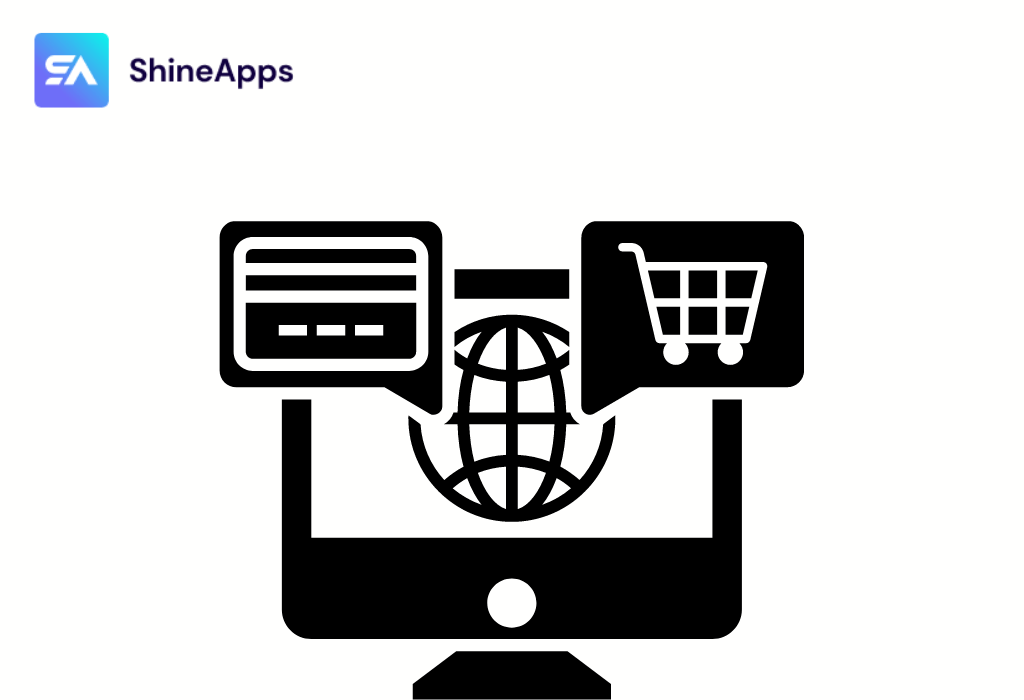
Let’s explore some compelling advertising examples from renowned brands that showcase different strategies for engaging audiences and promoting their products.
Dollar Shave Club: Humor and Simplicity
Dollar Shave Club, known for its subscription-based shaving products, is a prime example of using humor and simplicity in advertising. Their promotional videos showcase the brand’s offerings in a humorous and relatable way.
By presenting the common frustrations of shaving and offering a simple solution through their products, Dollar Shave Club successfully appeals to their audience’s pain points and offers a convenient solution.
Nike: Inspirational Storytelling
Nike‘s advertising often centers around inspirational storytelling that taps into human emotions and aspirations. Their “Just Do It” campaign, for instance, encourages individuals to push their limits and strive for excellence.
By featuring real stories of athletes overcoming challenges, Nike creates a sense of empowerment and motivation. Ecommerce brands can learn from Nike’s approach by crafting compelling narratives that resonate with their target customers’ aspirations.
Apple: Sleek Aesthetics and Innovation
Apple is renowned for its sleek and visually appealing advertising campaigns that highlight product design and innovation. Their advertisements focus on showcasing the aesthetic beauty and cutting-edge features of their products.
Ecommerce businesses can draw inspiration from Apple by emphasizing the unique attributes of their products through captivating visuals and highlighting how these features can improve customers’ lives.
Conclusion
In short, advertising is not only a means of information but also a powerful tool for branding, creating awareness, and promoting business. Making effective advertising requires creativity, an understanding of the target audience, and the ability to interact with customers. Advertising not only sets your brand apart but also shapes how customers perceive your products and services.



